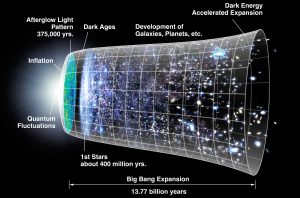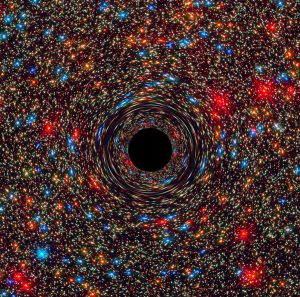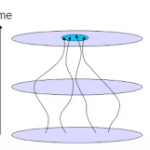 David Lewis’s (I’m coming to accept this new convention with s-ending possessives!) solution to Putnam’s semantic indeterminacy is that we have a network of concepts that interrelate in a manner that is consistent under probing. As we read, we know from cognitive psychology, texts that bridge unfamiliar concepts from paragraph to paragraph help us to settle those ideas into the network, sometimes tentatively, and sometimes needing some kind of theoretical reorganization as we learn more. Then there are some concepts that have special referential magnetism and are piers for the bridges.
David Lewis’s (I’m coming to accept this new convention with s-ending possessives!) solution to Putnam’s semantic indeterminacy is that we have a network of concepts that interrelate in a manner that is consistent under probing. As we read, we know from cognitive psychology, texts that bridge unfamiliar concepts from paragraph to paragraph help us to settle those ideas into the network, sometimes tentatively, and sometimes needing some kind of theoretical reorganization as we learn more. Then there are some concepts that have special referential magnetism and are piers for the bridges.
You can see these same kinds of bridging semantics being applied in the quest to solve some our most difficult and unresolved scientific conundrums. Quantum physics has presented strangeness from its very beginning and the various interpretations of that strangeness and efforts to reconcile the strange with our everyday logic remains incomplete. So it is not surprising that efforts to unravel the strange in quantum physics often appeal to Einstein’s descriptive approach to deciphering the strange problems of electromagnetic wave propagation that ultimately led to Special and then General Relativity.
Two recent approaches that borrow from the Einstein model are Carlo Rovelli’s Relational Quantum Mechanics and David Albert’s How to Teach Quantum Mechanics. Both are quite explicit in drawing comparisons to the relativity approach; Einstein, in merging space and time, and in realizing inertial and gravitational frames of reference were indistinguishable, introduced an explanation that defied our expectations of ordinary, Newtonian physical interactions. Time was no longer a fixed universal but became locked to observers and their relative motion, and to space itself.
Yet the two quantum approaches are decidedly different, as well. For Rovelli, there is no observer-independent state to quantum affairs.… Read the rest





 Research can flow into interesting little eddies that cohere into larger circulations that become transformative phase shifts. That happened to me this morning between a morning drive in the Northern California hills and departing for lunch at one of our favorite restaurants in Danville.
Research can flow into interesting little eddies that cohere into larger circulations that become transformative phase shifts. That happened to me this morning between a morning drive in the Northern California hills and departing for lunch at one of our favorite restaurants in Danville.